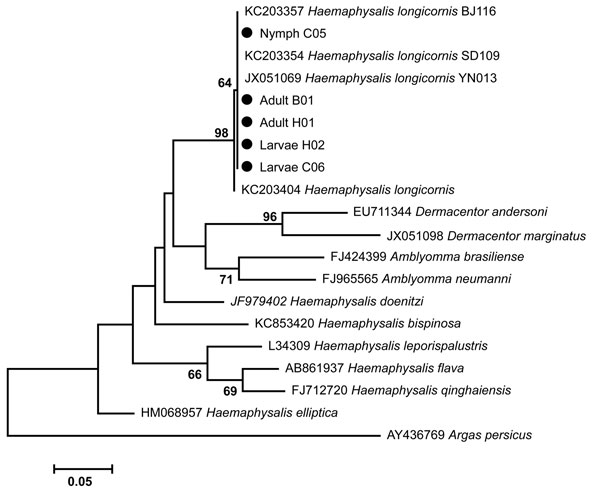Volume 21, Number 10—October 2015
Research
Haemaphysalis longicornis Ticks as Reservoir and Vector of Severe Fever with Thrombocytopenia Syndrome Virus in China
Figure 1

Figure 1. Phylogenetic analysis of mitochondrial 16S rRNA gene of ticks collected during June–July 2014 from Jiaonan County, Shandong Province, China. The results showed that the larval, nymphal, and adult ticks (indicated by black dots) were all Haemaphysalis longicornis ticks. Scale bar represents nucleotide substitutions per site.
Page created: September 22, 2015
Page updated: September 22, 2015
Page reviewed: September 22, 2015
The conclusions, findings, and opinions expressed by authors contributing to this journal do not necessarily reflect the official position of the U.S. Department of Health and Human Services, the Public Health Service, the Centers for Disease Control and Prevention, or the authors' affiliated institutions. Use of trade names is for identification only and does not imply endorsement by any of the groups named above.